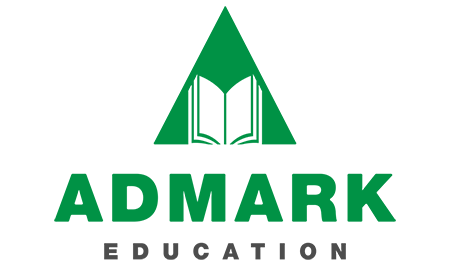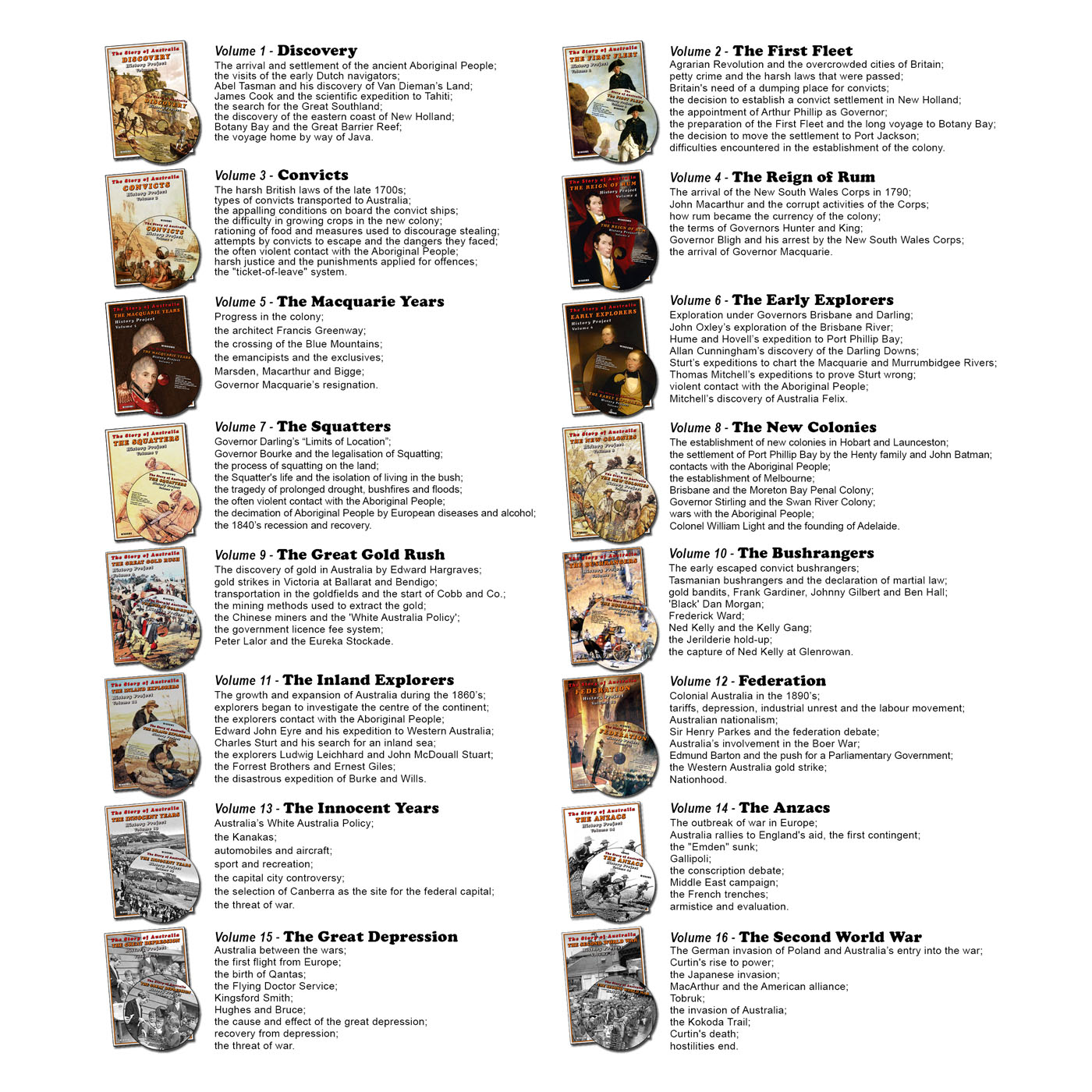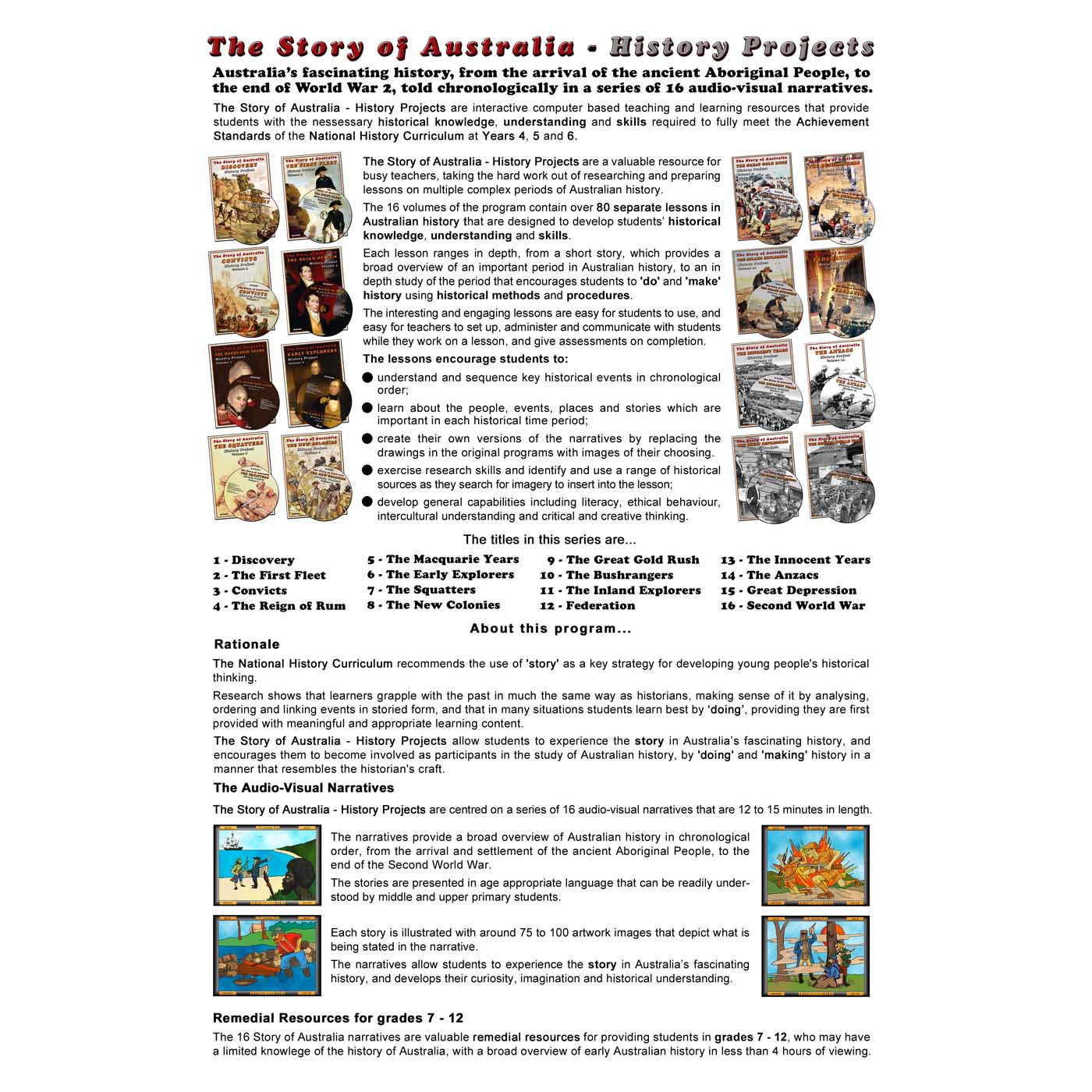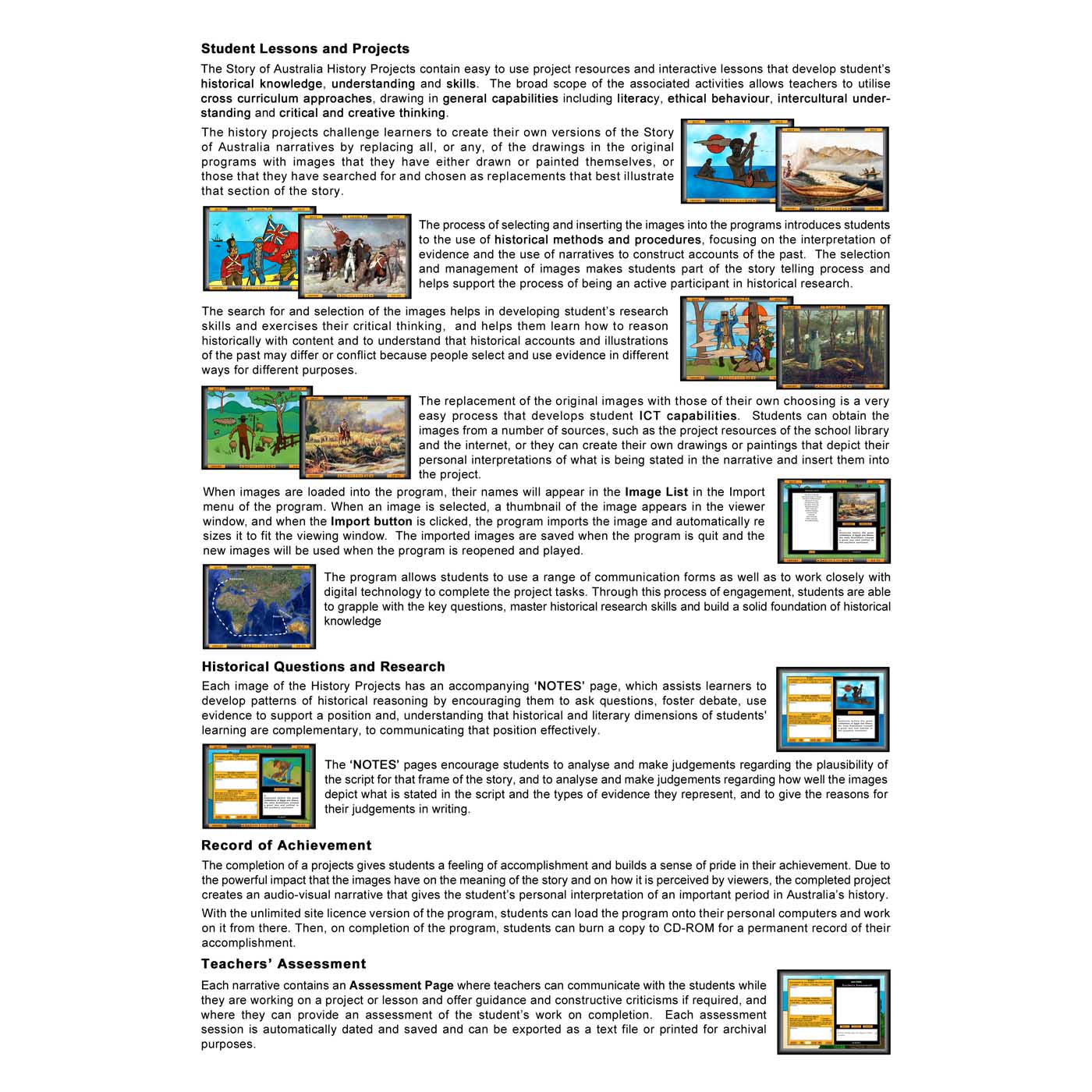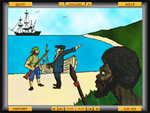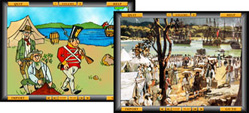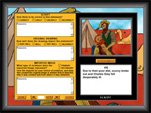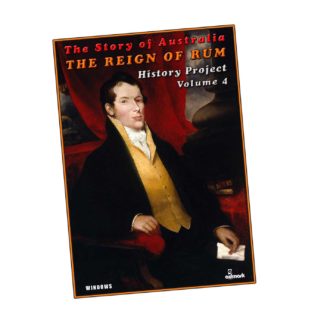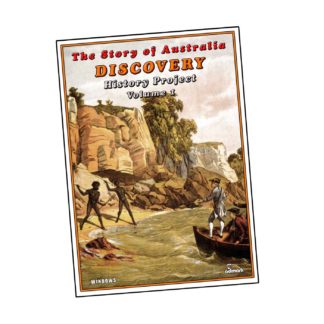Description
Complete set of 16 Volumes with an unlimited site licence for Digital Download – $499
Available for Digital Download
Formatted for Windows or Mac
School Price
$40 with an unlimited site licence
(An unlimited site licence allows installation on a server network and/or any number of computers within the school, including personal computers of enrolled students, and allows students to retain, and/or burn to disk, a working copy of their project for their personal record.)
The Story of Australia – History Projects is centred around a 16 volume series of audio visual narratives that give a broad overview of early Australian history, from the arrival of the ancient Aboriginal People, to the visits of the early Dutch navigators, the discovery and colonisation of the great southland by the British and the federation of those colonies into the nation of Australia. We learn of the early years of the new nation and its involvement in the First World War, followed by the effects of the Great Depression on Australia and Australia’s participation in the Second World War.
The National History Curriculum recommends the use of ‘story’ as a key strategy for developing young people’s historical thinking. Research shows that learners grapple with the past in much the same way as historians, making sense of it by analysing, ordering and linking events in storied form, and that in many situations students learn best by ‘doing’, providing they are first provided with meaningful and appropriate learning content.
The Story of Australia – History Projects allow students to experience the story in Australia’s fascinating history, and encourages them to become involved as participants in the study of Australian history, by ‘doing’ and ‘making’ history using historical methods and procedures in a manner that resembles the historian’s craft.
The History Projects introduce students to the process of learning about and understanding the stories and situations which were a part of everyday life experiences in years past, and asks them to reflect on how these stories mesh together to form the Australia we know today.
By becoming a part of the narrative and immersing themselves in the process of inquiry they can create a powerful learning journey for themselves.
The Audio Visual Narratives |
|
|
The narratives provide a broad overview of Australian history in chronological order, from the arrival and settlement of the ancient Aboriginal People, to the end of the Second World War.
Each story is illustrated with around 75 to 100 artwork images that depict what is being stated in the narrative. |
 |
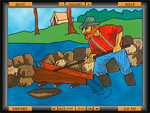 |
The stories are dramatically told in child appropriate language that can be readily understood by middle and upper primary age students. |
 |
| To view an example of the narratives, watch The Reign of Rum Demonstration video below. |
Student Lessons and Projects |
|
The Story of Australia History Projects contain easy to use project resources and interactive lessons that develop student’s historical knowledge, understanding and skills. The broad scope of the associated activities allows teachers to utilise cross curriculum approaches, drawing in general capabilities including literacy, ethical behaviour, intercultural understanding and critical and creative thinking.
|
Replacing Program Images |
|
|
The search for and selection of the images helps in developing student’s research skills and exercises their critical thinking, and helps them learn how to reason historically with content and to understand that historical accounts and illustrations of the past may differ or conflict because people select and use evidence in different ways for different purposes. |
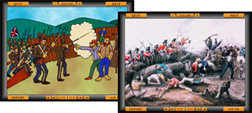 |
| To view a demonstration of how the images are imported into the program, watch the Image Import Demonstration video below. |
| For a demonstration of the impact that the imported images have on the meaning of the story and on how it is perceive by viewers, watch The Reign of Rum Demonstration video below, which uses imported images in place of the original drawings. |
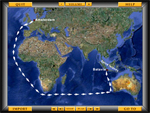 |
The lessons and associated activities develop student ICT capabilities. They allow them to use a range of communication forms as well as to work closely with digital technology to complete the project tasks. |
Easy Setup and Operation |
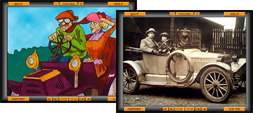 |
The replacement of the original images with those of their own choosing is a very easy process. Students can obtain the images from a number of sources, such as the school library and the internet, from which they can download images directly into the program, or they can create their own drawings or paintings that depict their personal interpretations of what is being stated in the narrative and insert them into the project.
|
|
When images are loaded into the program, their names will appear in the Image List in the Import menu of the program. When an image is selected, a thumbnail of the image appears in the viewer window, and when the Import button is clicked, the program imports the image and automatically re sizes it to fit the viewing window. The imported images are saved when the program is quit and the new images will be used when the program is reopened and played.
|
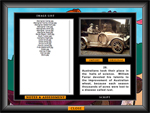 |
Historical Questions and Research |
|
Each image of the History Projects has an accompanying “Notes and Assessment” page, which assists learners to develop patterns of historical reasoning by encouraging them to ask questions, foster debate, use evidence to support a position and, understanding that historical and literary dimensions of students’ learning are complementary, to communicate that position effectively. |
 |
|
|
The“Notes and Assessment” pages encourage students to analyse and make judgements regarding the plausibility of the script for that frame of the story, and analyse and make judgements regarding how well the original drawings and imported images depict what is stated in the script, and determine the types of evidence the imported images represent, and to give the reasons for their assessments in writing. |
Teachers’ Assessment |
| Each narrative contains an Assessment Page where teachers can communicate with the students while they are working on a project or lesson and offer guidance and constructive criticisms if required, and where they can provide an assessment of the student’s work on completion. Each assessment session is automatically dated and saved and can be exported as a text file or printed for archival purposes. |
 |
| For a demonstration of the Notes and Assessment page, watch the Notes and Assessment video below. |
Record of Achievement |
|
The completion of a projects gives students a feeling of accomplishment and builds a sense of pride in their achievement. Due to the powerful impact that the images have on the meaning of the story and on how it is perceived by viewers, the completed project creates an audio-visual narrative that gives the student’s personal interpretation of an important period in Australia’s history. With the unlimited site licence version of the program, students can load the program onto their personal computers and work on it from there. Then, on completion of the program, students can burn a copy to CD-ROM for a permanent record of their accomplishment. |
Easy Program Setup and Operation |
|
A great deal of discretion is given to the teacher as to how they use the program. The History Projects can be used by individual students, with each student working on their own project, or by students working together in small groups, or by the entire class working on one project. Teachers can choose to just play the stories to give students a broad overview of Australian history, or they can use an entire narrative as a depth study, or select a chapter, or chapters, of the narrative and use them as the lesson. Whichever method is used, all of the student activities and teacher assessments will function equally well. |
|
The History Projects have easy to follow tutorials that guide you through the simple process of setting up and working on a new project. A new project is started by simply copying it from the CD-ROM and pasting it onto your computer, or onto a flash drive that is connected to your computer. The copied programs contain all the functions that are required for the student’s operation and the teacher’s assessment of a project.
|
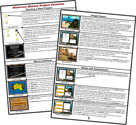 |
